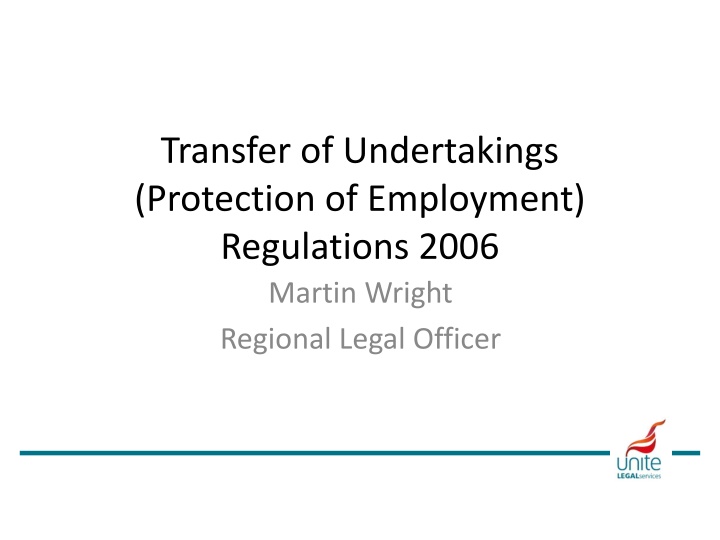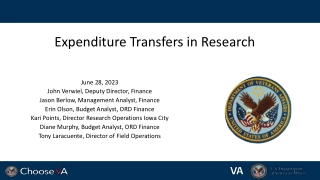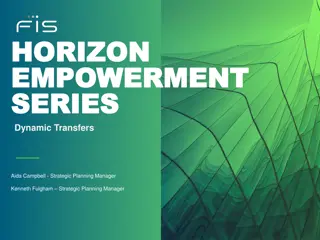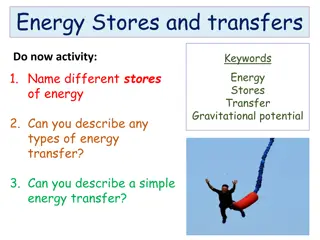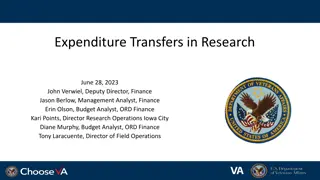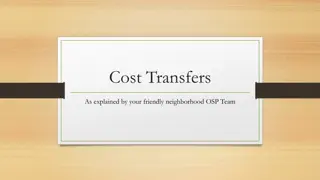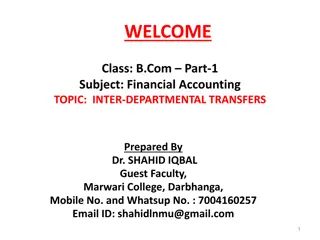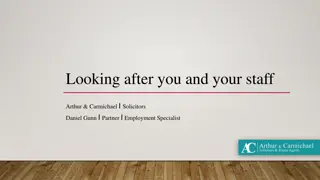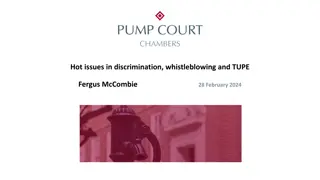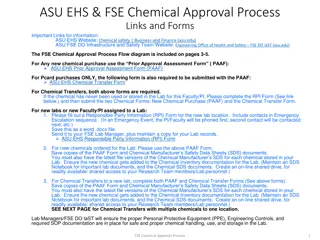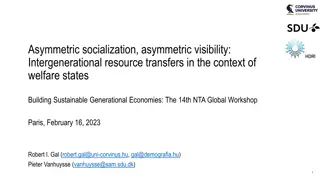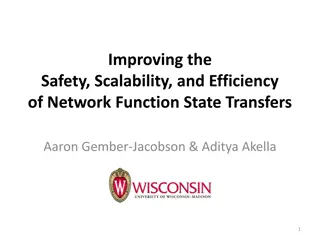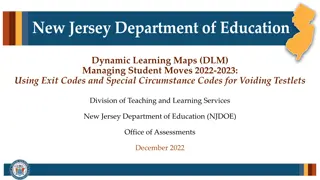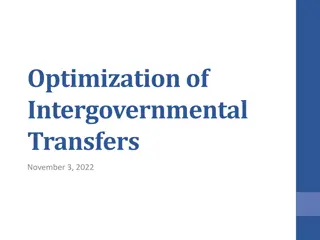TUPE Regulations Overview: Transfers, Terms, and Conditions
TUPE Regulations aim to safeguard employees during transfers of businesses or services. Key topics covered include the application criteria, employee transfer process, determining assigned employees, and preserving contractual terms.
Download Presentation

Please find below an Image/Link to download the presentation.
The content on the website is provided AS IS for your information and personal use only. It may not be sold, licensed, or shared on other websites without obtaining consent from the author.If you encounter any issues during the download, it is possible that the publisher has removed the file from their server.
You are allowed to download the files provided on this website for personal or commercial use, subject to the condition that they are used lawfully. All files are the property of their respective owners.
The content on the website is provided AS IS for your information and personal use only. It may not be sold, licensed, or shared on other websites without obtaining consent from the author.
E N D
Presentation Transcript
Transfer of Undertakings (Protection of Employment) Regulations 2006 Martin Wright Regional Legal Officer
Introduction TUPE implements the Acquired Rights Directive and was amended by Collective Redundancies and Transfer of Undertakings (Protection of Employment) (Amendment) Regulations 2014 ( CRATUPE ) Purpose of TUPE is to protect employees in the event of a transfer. This session will assume Tupe applies and will therefore focus on : Who transfers What transfers Changes to terms and conditions Material detriment and constructive dismissal
When does TUPE apply? Where there has been a business transfer Transfer from one person to another of an economic entity that retains its identity after the transfer Where there is a service provision change Organised grouping of employees whose principal purpose is to carry out activities on behalf of a client Post transfer activities need to be fundamentally the same
Who transfers? (1) Regulation 4 of TUPE provides that: a relevant transfer shall not operate so as to terminate a contract of employment of any person employed by the transferor and assigned to the organised grouping of resources or that is subject to the relevant transfer, which would otherwise be terminated by the transfer, but such contract shall have effect after the transfer as if originally made between the person so employed and the transferee. employees
Who transfers? (2) Employees and those engaged on a contract of employment or otherwise Does not include agency workers or the genuinely self employed Those employees employed by the transferor immediately before the transfer; Those who are assigned to the relevant grouping of resources or employees subject to the transfer
Who transfers? (3) Deciding which employees are assigned ? The essential characteristic is the link between the employee and the part of the undertaking or business to which s/he is assigned to carry out her/his duties Botzen v Rollerdamsche Doogdo Matschappij [1986] Nature of contractual duties and the employees role in the organisational structure London Borough of Hillingdon v Gormanley and ors EAT 0191/14 Caution against taking a snapshot at the time of the transfer - Argll Postal Services v Sterling and ors EATS 0012/11 Temporary assignments - Securiplan v Bademosi UKEAT/1128/02
Who transfers? (4) Employees absent at the time of the transfer BT Managed Services v Edwards and anor [2015] IRLR 994 Employees subject to disciplinary proceedings - Jakolew v Nestor Primecare Services t/a Saga and Anor [2015] ICR 110 Employees who are dismissed - G4S Support Services (UK Limited) v Anstey and Others [2006] IRLR 588 Secondment Celtec v Astley and Ors [2006] ICR 992 and Capita Health Solutions Ltd v McLean [2008] IRLR 595.
What transfers? (1) Reg 4(1) any such contracts shall have effect after the transfer as if originally made between the persons employed and the transferee all transferors rights, powers, duties and liabilities under or in connection with any such contract
What transfers? (2) Contractual liabilities e.g unpaid wages Length of service Collino and Ciappero v Telecom Italia Spa [2002] ICR 38 Where terms are being negotiated Learning and Skills Council v Barfoor and ors UKEAT 0621/03 Non Contractual benefits Pensions Statutory rights - e.g return to work from mat leave, discrimination under the Equality Act 2010 Vernon v Azure Support Services 0192/2013
What transfers? (3) Recognition voluntary only if the organised grouping or resources maintains an identity distinct form the remainder of the workforce reg 6 Collective Agreements Reg 4A a transferee who is not a party to the collective bargaining is not bound by a CA after the transfer
Changes to terms and conditions (1) Variation is void only if the sole or principal reason for the variation is the transfer itself
Changes to terms and conditions (2) Variation is valid if: The reason for the variation is an ETO reason entailing changes in the workforce, provided the employer and employee agree; or The terms of the contract permit the employer to make such a variation.
When will a transfer be a reason for the change? To harmonise terms and conditions: There is no other explanation - P Bork International A/S v Foreningen AF arbejdsledere I Denmark [1989] IRLR 41 - Smith and Ors v Trustees of Brooklands College UKEAT 0128/11 - Enterprise Managed Services Ltd v Dance and Ors UKEAT 0200/11
Variations permitted by a term of the contract Variation permitted by a term of the contract even if the reason for the change is solely or principally the transfer Contrary to European Case Law Foreningen af Arbejdsledere I Danmark v Daddys Dance Hall [1988] IRLR 315 Flexibility clauses Bateman v Asda Stores Ltd UKEAT 0221/09 Government guidance an employer cannot introduce a flexiblity clause by reason of the transfer
ETO reason Entailing changes in the workforce means: A change in job function A change in the numbers employed - Berriman v Delabole Slate [1985] ICR 546 A change to the workplace - Reg 4(5)A
Collective agreements (1) The employer can: Vary the terms incorporated by a collective agreement provided that the variations: Takes place 1 year or more after the transfer; and overall the terms must be no less favourable
Collective agreements (2) Only those collective agreements in force at the time of the transfer are binding on the transferee after the transfer Alemo-Herron and Ors v Parkwood Leisure Facility [2013] ICR 116 - Visteon Engineering Services Ltd v Oliphant and Ors UKEAT 0010/13 -
Unilateral variation Normal principles apply Options for the employee: - Accept the breach - Stand and sue - Claim unfair/constructive dismissal - Refuse to work
Dismissals (1) Reg 7 provides dismissal is automatically unfair if the sole or principal reason for the dismissal is the transfer
Dismissal (2) Where the sole or principal reason is an ETO reason entailing changes in the workforce then dismissal for: - Redundancy - SOSR Subject to the test of fairness
Is the transfer the reason for the dismissal? Spaceright Europe Ltd v Baillovaine and Anor [2012] IRLR 111 Kavanagh v Crystal Palace [2014] IRLR 39 Hazel and Anor v Manchester College [2014] EWCA Civ 72
Material detriment dismissal (1) Reg 4(9) provides: If a relevant transfer involves or would involve a substantial change in working conditions to the material detriment of an employee whose contract of employment transfers then the employee may treat the contract as having been terminated and the employer shall be treated as having been dismissed by the employer
Material detriment dismissal (2) The legal test of whether there has been a substantial change is whether the treatment is of such a kind that a reasonable employee could or would take the view that it was to his or her detriment. Examples: Merckx and Nauhuys v Ford Motors Company Belgium SA C-171/94 Tapere v South London Maudsley NHS Trust UKEAT 410/08 Abellio London Ltd (formerly Travel London Ltd) v Musse and Ors UKEAT 0283/11
Right to object Regulation 4 provides for : an express right for an employee to object to transferring. the transfer terminates the contract, BUT the employee is not treated as dismissed for any reason
Constructive dismissal (1) Section 95 (1)(c) of the ERA 1996 an employee is dismissed by his employer if .the employer terminates the contract under which he is employed (with or without notice) in circumstances in which he is entitled to terminate it without notice by reason of the employer s conduct
Constructive dismissal (2) The employee has to show : There has been a fundamental breach such as to justify the ee resigning Resigned in response to the breach and not for some other reason Not delayed resigning too long otherwise will be treated as having affirmed the breach Note - claims can only be taken by employees In Tupe where employee claiming breach by Xferee against Xferor must also object
Constructive dismissal (3) A wage cut (RF Hill Limited v Mooney [1981] IRLR 258); The withdrawal of fringe benefits such as the right to a company car (Triton Oliver (Special Products) Limited v Bromage EAT 709/91); Change to the employee s job content (Nationwide Building Society v Benn); Change in hours of work (Tawiah v Southern Derbyshire Mental Health Trust ET Case No: 11547/94 a case where the employer insisted that the nurse change from the night shift to the day shift Trust and confidence - Malik v Bank of Credit and Commerce International SA [1997] IRLR 462
Constructive dismissal (4) Examples of breach of the implied term of trust and confidence: Suspension without pay; Failure to treat grievances properly; Dressing down of employee in front of (subordinate) colleagues; Changes to employee s contracted duties leading to de- skilling
Remedies Material detriment dismissal Constructive dismissal Time limit 3 months less 1 day from the date of dismissal Early conciliation applies
Any questions? Thank you for listening
